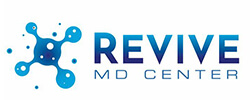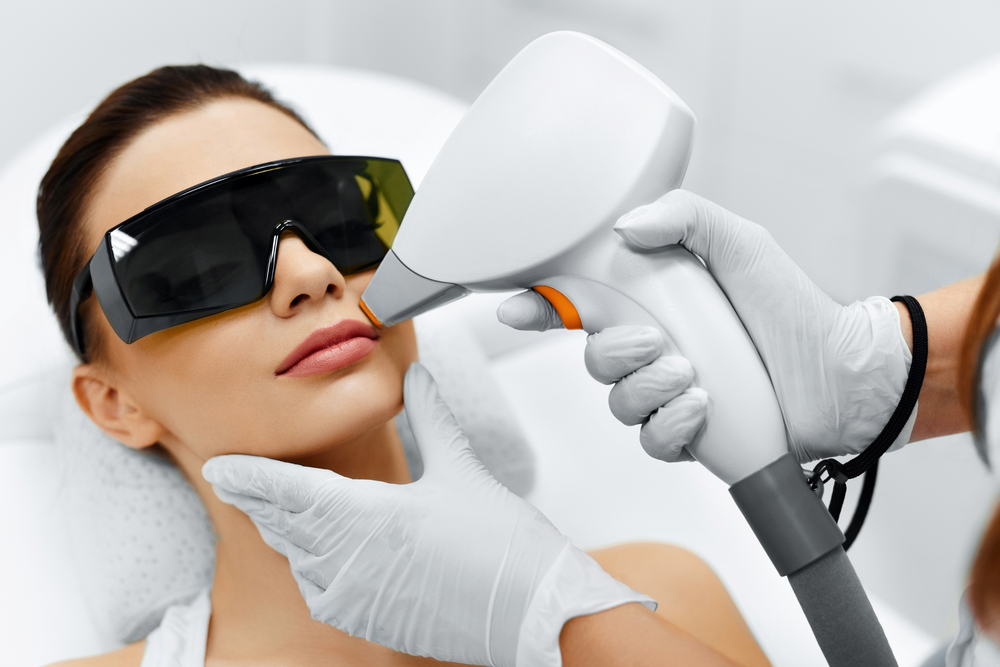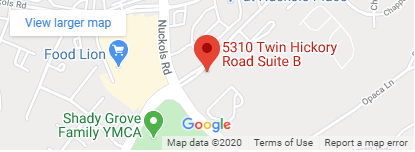If you’ve suffered any type of injury, acute or chronic, and are even now experiencing pain, you’re probably not in the mood for more delays. So we’ll get right to the point: laser therapy for neuropathy can target damaged tissues, relieve pain, and accelerate the healing process. Yes, it can heal and not just mask your symptoms. And at Revive MD Center in Glen Allen, VA, we know how important this can be to restoring quality of life.
What Is Laser Therapy Good For?
We often think of laser as being beneficial for skin resurfacing, but this treatment is also breathing new oxygen into pain management. Not because it’s new – class IV laser therapy was cleared by the FDA in 2003 – but because it’s gaining more widespread attention. The reasons for this are many, but namely, laser is effective, non-habit forming, and safe for most patients.
Laser is a staple in many medical offices because It can speed injury recovery, decrease inflammation, and reduce scar tissue formation. It also increases circulation to aid muscle and cell repair. In total, these effects successfully improve the symptoms of many conditions, including:
- Sports injuries, such as sprains and strains
- Repetitive stress injuries
- Rheumatoid arthritis and osteoarthritis
- Neuropathy
- Fibromyalgia
- Plantar fasciitis
- Shingles
- Auto and work-related injuries
- Carpal tunnel syndrome
- Neck, lower back, and rib pain
- Shoulder, back, and knee pain
- Myofascial trigger points
How Does It Work?
Class IV laser treatment emits heat in a wavelength that penetrates deeper and more efficiently than its class III predecessor. This allows the laser to deliver energy to tendons, ligaments, muscles, and nerves in a relatively short time. Most sessions last under 10 minutes, meaning multiple areas can be treated at one time to further improve your results.
In terms of healing, laser stimulates the production of adenosine triphosphate (ATP), a compound that powers many cellular processes. Biologists call ATP the energy currency of life because it stores and provides the energy we need to stay alive. ATP is so important that the body uses several different systems to produce it; each person essentially turns over his or her weight in ATP every day.
ATP and Healing
You likely already know this, but just as a reminder, the human body is built to heal itself. To do so, however, cells need energy. ATP is an elemental component of this process. Without getting too technical, ATP activates cells that mediate inflammation. Although this is an important and natural component of recovery, when left unchecked, inflammation can be harmful and even lead to arthritis.
ATP also triggers events that help directly heal damaged tissues. To explain, tissues that border the damaged site will have the highest concentration of ATP to promote tissue remodeling and cell death – that is, those too damaged for repair are prompted to naturally die. Further from the injury, extracellular ATP encourages cell proliferation and signaling that prompts additional tissue remodeling.
Explaining Laser Treatment
Albert Einstein first theorized the concept of lasers in 1916, and since its actual invention in 1960, the laser is one of the most versatile treatments in medicine. Clinicians initially hoped it would kill tumor cells, but the tool proved ineffective for that purpose. Instead, it was discovered laser accelerates wound healing and today, its effects have been extensively reviewed in medical journals.
Many compare low level laser therapy (LLLT) with class IV laser, but one of the most important differences is that the latter produces a biostimulative effect on deep tissues that lower powered lasers cannot match. The class IV laser also produces significant secondary and tertiary (long-term) effects that heal rather than mask tissue damage. Class IV laser is now approved by the FDA to produce the following results:
- Relieve muscle and joint pains, aches, and stiffness
- Relieve arthritic pain and stiffness
- Temporarily increase local blood circulation
- Relax muscles and muscle spasms
Classifying Lasers
Lasers are classified according to output power, which is harnessed to stimulate targeted healing. Class IIIa lasers generally have an output of 1 to 5 milliwatts, class IIIb lasers are those capable of delivering up to 500 milliwatts, and class IV lasers include all devices with an output of 500 milliwatts or more. This classification scheme does not distinguish how the lasers are used, whether for cosmetic, surgical, or therapy purposes.
Wavelength is the primary determinant of how deep a laser can penetrate into tissues. Lower wavelengths are absorbed within the body by hemoglobin and melanin, while higher wavelengths are absorbed by water. Deep penetrating infrared lasers, like the K-Laser used in our office, are ideal for treating pain because they conservatively reach four centimeters below the skin’s surface. Secondary effects, however, have been observed at greater depths.
The Goal of Treatment
Much like photosynthesis that occurs in plants, light energy is emitted from lasers into the skin. But it doesn’t stop at the surface; it continues traveling through tissues and into the cell membrane. This induces a process called photobiostimulation, wherein light stimulates a biological reaction. In the case of tissue healing, different biologic reactions take place, including the release of endorphins and the synthesis of collagen.
While the primary goal may be to ease the pain and discomfort associated with many different injuries, laser therapy may eventually normalize damaged tissues. This means function is restored so patients can live fuller, happier lives. Laser can also be combined with other modalities, such as specialized exercises or chiropractic adjustments, to encourage a more comprehensive recovery.
What to Expect
During treatment with a class IV laser, the handheld device is placed directly over the injured area. It then penetrates tissues without pain, visible marks, or scars. Because laser cannot penetrate through clothes, it must make skin contact. Many patients don’t feel anything during treatment, whereas others experience slightly warm and relaxing sensations.
This treatment is safe to use over metal implants, and at the end of your treatment plan, you’ll likely notice a difference in your pain, swelling, and/or range of motion. Some patients experience improvements after their very first session, while others need several treatments before realizing a change. This does not mean the treatment isn’t working, but that your injury is more severe and simply requires more time. Each treatment produces cumulative effects.
Primary and Secondary Effects
Primary healing responses are elicited as the laser emits photons. Those reach low-lying cells like fibroblasts, where the energy is absorbed and converted to chemical kinetic energy. Such effects are both predictable and beneficial, with photons reflecting, transmitting, and scattering on tissues. The scattered photons are not a happenstance incident, but rather another anticipated effect that creates an egg-shaped volume of treated tissue.
Secondary reactions serve to amplify those that are primary. For instance, cell membranes become more permeable and calcium is released from mitochondria (which exist in every cell). These actions prompt cell metabolism and also regulate signaling pathways that prompt wound repair mechanisms, including:
- RNA and DNA synthesis
- Cell migration, mitosis, and proliferation
- Protein secretion
Long-term Effects
Energized cells start to communicate with each other as well as those cells not directly involved in treatment. They release growth factors that ramp up healing; these aren’t growth factors that help your body in terms of size, but rather those that promote healing by regulating cell proliferation and supporting new blood vessel formation – among other activities.
Growth factors are so important that they’re present in every stage of healing, particularly with damaged tendons and ligaments. Meanwhile, intercellular communications create an increase in the body’s natural immune responses, including the release of macrophages and T-lymphocytes. Endorphins also increase to relieve pain.
What Science Tells Us
The long-term effects of laser treatment are the least predictable components of treatment because they rely on outcomes we cannot directly influence. Intercellular communications, for instance, fully take place internally. A number of other variables also influence long-term results, but studies confirm laser can effectively and dramatically reduce pain.
More than 1200 studies conducted worldwide over 40 years have proven the therapeutic benefits of laser therapy. Specifically, these studies tell us:
- Acute pain diminished by more than 70%
- Chronic pain reduced by more than 60%
- Knee injuries showed improved flexibility and sensitivity after each treatment
- Chronic low back pain was effectively reduced in 71% of cases
More Study Results
In a study published by the National Institutes of Health (NIH), 100 patients were examined before and after laser treatment. The mean verbal pain rating was 7.31 before therapy; that number dropped to 4.0 and 3.40 at one hour and 24 hours respectively after one laser session.
At the twenty-fourth hour, laser was re-applied to 40 patients whose pain level was greater than 5.0. Fifty-four hours later, every patient in this group indicated their pain had dropped to zero. None of them required a third laser dose or rescue treatments while on laser therapy.
Frequently Asked Questions
One subject that often arises with laser is whether or not it’s safe. Although class IV therapy lasers are powerful devices, they are very safe. All members of our staff undergo the approved training program. In addition, the FDA requires specific guidelines be followed, including that everyone in the treatment room where protective goggles, and such instructions can be easily implemented and followed.
How Often Do Patients Need Treatment?
This depends on the specific condition that requires attention, but acute conditions can be treated daily if they cause substantial pain. Chronic concerns respond better when treatments are delivered two or three times per week, with sessions tapering to once weekly or every other week as improvements become more visible.
How Many Treatments Are Necessary?
Again, this varies from patient to patient. General guidelines are these: three to six treatments may be sufficient for acute conditions, while those of a chronic nature may require 10 to 15 treatments. Arthritis, which is generally more severe, may require ongoing care to help manage pain.
Are Treatments Customized?
Absolutely. One of the foremost features on the K-laser is its versatility; our team can control the power output to, in turn, also control how deep the energy penetrates. Lower wavelengths, for instance, are primarily absorbed by the skin, whereas higher wavelengths get absorbed by water that exists naturally in our tissues. This allows for enhanced tissue nutrition, increased oxygen delivery, and removal of cellular waste – or, in short, profound therapeutic effects.
A Treatment You Should Try
Laser therapy is not new, but learning about its positive effects on pain management, tissue regeneration, and faster healing means you suddenly have another option from which to choose. If you’ve tried oral and topical pain relievers and are now ready for a more restorative therapy, we urge you to consider laser. Schedule your consultation today by calling Revive MD Center in Glen Allen, VA.




